Roleplaying In The Grimdark – Warhammer: 40,000: Wrath & Glory | Review
February 22, 2022 by brennon
I'd talked about roleplaying in The Old World and the Mortal Realms with Cubicle 7 in the past but until now, I'd yet to dive into the grimdark of the far future. Well, with Warhammer 40,000: Wrath & Glory lining up to have quite the year in 2022, I wanted to dive in and tell you all about what this game offers up for budding Inquisitors, Space Marines and Rogue Traders.
Currently, there is no up-to-date Starter Set for Wrath & Glory and so in this article, I'll be going through the Core Rulebook and what it offers as a solid foundation for your space-faring adventures against the Xenos and forces of Chaos.
Tiers Of Play & Getting Started
In Warhammer Fantasy Role-Play, more than likely your characters are going to start at the bottom of the pile and find themselves embroiled in events that are far above their station. In Warhammer Age Of Sigmar: Soulbound (again, more than likely - not all the time), you play as semi-mythical warriors (some might say superheroes!) doing the bidding of gods that walk amongst you. The neat thing about Wrath & Glory is that it offers up a selection of Tiers that provide the framework for beginning your adventures.
The different characters that you can play as in Wrath & Glory fall into four different Tiers of play that correspond nicely to the power levels of the individuals you choose to play as. Want to play as a squad Of Deathwatch Space Marines battling against hordes of Xenos? Well, that's going to be a Tier 4 campaign. Want to do investigations in the slums of a hive city against a suspected mutant cabal? Well, that could well be a Tier 1 or 2 campaign.
Why did I start by talking about this? I think in a roleplaying game it's important to set a tone and expectation for your group. We've all had those games where people want to do one thing and the campaign ends up being something entirely different! The Tier system in Wrath & Glory helps to lay the groundwork and foundations for your campaign at the outset. Your players, and the GM, know what kind of missions you should be undertaking, what you're expected to deal with and the scope for your story.
Considering the breadth and depth of the Warhammer 40,000 world, I was impressed by just what Cubicle 7 were able to cram into these tiers of play for different playstyles. You could jump into the game as a Tactical Space Marine, an Inquisitorial Acolyte, Ganger, Death Cult Assassin or maybe even an Aeldari Ranger or Ork Boy!
This wide array of different choices means that you should be able to tell all manner of fascinating stories on the tabletop, catering for lots of different groups. Like the idea of doing an investigation heavy campaign with lots of interaction between players and NPCs? You got that. Want to play as those aforementioned Deathwatch Space Marines brutally scything their way through a Tyranid infested city on a Death World, you can do that too!
Easy Character Creation
All of these choices might feel a little bit overwhelming. Thankfully, Cubicle 7 have used a similar system to the one employed in Warhammer Age Of Sigmar: Soulbound. Whilst you can start out playing Wrath & Glory by making a character from scratch, they have also included a series of Archetypes that can be used to get you started ridiculously quickly.
Similar to the Archetypes in Soulbound, you get a suggested set of statistics and then it's simply a case of making a few choices on Wargear, Skills, Weapons and away you go. This doesn't mean that you can't personalise your choice of character, there is still plenty that you can tinker with and play around with when making your chosen hero. But, this provides new players with a very easy way to just grab a character and get stuck into the action.
As I mentioned, there is also plenty of choice for those who don't want to be humans. Whilst not exactly robust, you can also choose to play as a band of Orks if you like or perhaps Aeldari. There are two archetypes that cover these factions but there is no reason why you can't make very specific builds for both of them just by going down the more detailed character building route.
There is also room in the character creation section of the book for making the followers of Chaos. There is a full table for those who want to dive into the background of playing a Chaos worshipper and whilst it might not be entirely for everyone, the option is there to be seriously evil and have fun doing it. Fantasy Flight Games tried this during their tenure as the custodians of the Warhammer 40,000 roleplaying game and whilst it was interesting, I'm not sure it caught on. It's good to have the option here though!
Gear Up For A Fight
The Wrath & Glory Core Rulebook then contains a plethora of different weapons, armour, gadgets and more for heading out into the grimdark. They didn't skimp when it came to the different weapons that your characters could bring into the midst of battle. They've even carried over all manner of different options for established weapons like the Bolter with the various rounds Space Marines and others use to take down specific foes. Kraken rounds for the win!
This is then augmented (hah) with options for bionics and all the different "gubbins" that people end up carrying around in campaigns. You never know when an auto-quill or a vox-bead is going to be needed, right?
The nice thing about all of this is that it has been done in such a way that it is pretty intuitive. Sure, there are a lot of bonus things you need to remember when you've got a Boltgun with three different types of ammo or a dozen or so Adeptus Mechanicus bionics grafted to your body but Wrath & Glory keeps things tied well to keywords and thankfully the text boxes for these aren't massive paragraphs of text. It's not like firing a gun in something like Traveller that's for sure!
Psychic powers are equally as intuitive and easy to get your head around. They work similarly to everything else in the game (which we'll get to in a minute!) and have simple ways to boost them and add extra elements to them when cast. As I've previously mentioned, they've managed to cover pretty much all of the bases. There are also loads of them so you're not going to feel left out if you wanted to step down the warp-touched road of a Psyker in Wrath & Glory!
Simple And Effective
The key thing here is that all of this has been done to give you depth when and where you need it but to keep the basics nice and simple. Warhammer Fantasy Role-Play, and to a degree the old Fantasy Flight Games Warhammer 40,000 systems were often touted as being great but with a lot of sometimes unneeded granularity. When you're fighting for your (very meagre) life in The Old World, you want that granularity to add to the parry and thrust of combat and such.
Wrath & Glory steers itself more towards the system Soulbound players will be aware of and embraces the more bombastic and over-the-top nature of the world you're inhabiting. You want to do something amazingly cool but you don't want to have to spend five minutes working the ins and outs of it. It's a lot easier to keep the detailed elements of combat in a game like Warhammer Fantasy Role-Play but when you're messing around with super weapons and Sci-Fi gubbins, I think you need to take that step back.
The Mechanic(u)s
At the core of the Wrath & Glory rules, we have a d6 based dice pool system. When you are asked to roll, the Gamemaster will ask you to combine one of your Attributes with your Skill to form a pool of dice.
To succeed in a test you'll need to match the Difficulty Number (DN) that the Gamemaster has set for it. Maybe you're trying to jump across a gap? Ok, that's Strength + Athletics and the DN is set at 4. You roll your dice and any that come up showing 4 or 5 are counted as successes or Icons.
4 or 5 on a die represents one Icon. Rolling a 6 counts as what's called an Exalted Icon. This counts as two Icons which is pretty awesome. Any Exalted Icons that you get not only help you complete your test but they also allow you to do something called Shift. Say you beat that leap across the gap with enough Icons and had two leftovers from the dice pool. Well, those can be used to give you some extra bonus through Shifting. Maybe you landed extremely well and managed to roll into a run straight away, gaining on the heretic that you're pursuing. It's a neat system that offers up a chance for you and the Gamemaster to come up with something cool!
Every dice pool in Wrath & Glory is also accompanied by a Wrath Die. The Wrath Die works the same as a normal die in your pool however if you roll a one or a six you face either Criticals or Complications.
Rolled normally, a Critical adds to your group's shared pool of Wrath which can be used to re-roll dice and make story-changing decisions in a bout of cooperative storytelling. It also allows you to do bloody and utterly awesome critical hits in combat!
A Wrath Complication does quite the opposite. This doesn't stop the flow of play but it offers a "yes but..." moment into proceedings. You made the jump across the gap but maybe you misjudged it and went sprawling. It offers up another chance for the player to get involved and come up with a way to "fail forward". If you don't know what to do, don't worry! There is a table in the book to help out and if in doubt you can also just give the Gamemaster more Ruin (a pool similar to Wrath that the storyteller can use).
Grimdark & Gruesome Combat
Combat works similarly to your normal tests but instead has you aiming to beat the enemies Defence which stands in for your normal DN. There are some fun elements to combat though that make players feel pretty awesome and also help with the grind that you sometimes get in roleplaying combat.
For one, combat is horribly brutal. Damage done from your attacks goes through to an opponents Resilience which resembles cuts and bruises earned in the rigours of combat. This then flows through into a character's Wounds which is a distinctly small pool (for the most part!) and represents more bloody and disgusting damage.
Most of the foes you will face in the game only have Resilience and so as the player characters, you'll feel like utter badasses as you slice your way through masses of foes! The thing is, just because you did something badass doesn't mean that the enemy can't do the same.
If you put yourself in a foolish position, don't use cover correctly or even work as a team and your enemies are going to make you feel just as bad as their long-departed buddy did a second go! Foes can also group up into Hordes, a concept that should be familiar to players of the old Fantasy Flight Game and Soulbound. This means they can group up their shots and focus down characters if they put a toe out of line.
Characters have a way to counteract this though too! If a big attack is incoming and works through your defence, you can instead move it to Shock instead. Shock is a bit like taking a blow to the head thanks to the fist of an Ogryn and even though it really hurts, biting through the pain and carrying on. It isn't infinite though!
I hope this shows off that there is a nice back and forth between the way both the enemy and player characters act in the midst of combat. This is heightened all the more by a very fluid initiative system. During a full round of combat, you don't have prescribed "turns" like in D&D. Instead, it's the go of the whole party and YOU decide who is going to act first, second, third etc. This is what I mean about making sure that you work as a team and use the right characters at the right time!
All of this comes together to provide you with, once again, a simple and effective means of not only narrative events in a barbed argument but also the bloody sprawl of the battlefield.
The Grimdark Gilead System
So, where do you set your games of Wrath & Glory? Well, anywhere you like is the proper answer. But, if you want some help then Cubicle 7 has put together a great section of the book talking about The Gilead System. It offers up interesting ideas for planets and such to visit as well some as patrons to guide your group of players.
It has everything that you could want from a Warhammer 40,000 setting. This means corrupt officials, hidden cults and Xenos monsters hiding in the shadows, monolithic oversight by unseen lords and plenty of suffering. This has all been further expanded in later releases by Cubicle 7 which we'll get into in future articles. They have provided players with a great playground to set their grimdark adventures though.
There is also the obligatory Bestiary at the back of the book filled with a core sampling of foes for you to face on your adventures. It covers all the basic stuff to get you started like the basic Daemons, Orks, Eldar, Heretics and more that you might run into during your adventures.
Final Thoughts
So, is Wrath & Glory worth diving into? I think it's a significant upgrade on the percentile system of the Fantasy Flight Games mechanics. It also feels like they have done a good job of condensing and tweaking what Ulisses North America did with Wrath & Glory when it was initially released.
I think the different Tiers of play offer up a good guideline for players and Gamemasters whilst also allowing them to cover the lowliest Guardsmen through to the mightiest Angel Of Death. The dice pool also helps to offer up a bit more of that bombastic and over-the-top feel that players are probably going to want out of a Warhammer 40,000 roleplaying game.
I have had the chance to play a few sessions of Wrath & Glory now and I really like how they have managed to get the balance right. I felt the same about Warhammer Fantasy Role-Play and Warhammer Age Of Sigmar: Soulbound. They give you the tools to feel like the main character(s) in a big sprawling story yet aren't afraid to cut your legs from under you in a typically grimdark way!
It feels like the folks behind these Games Workshop roleplaying games at Cubicle 7 get these Warhammer settings. You can see their passion coming through and I think they are a solid option for those looking to dive deeper into the settings of their wargames.
Does this mean it's flawless? Of course not. There are wrinkles here and there once you start getting very technical with some of the higher Tier characters and their equipment. Balancing might also be a bit of an issue for new Gamemasters too. Don't underestimate how much damage your pool of minions can do to heroes in Wrath & Glory! There can also be a bit of paperwork and a modicum of downtime when you have a lot of different talents, weapon qualities and such all happening at once. But, this is the kind of thing that should end up becoming second nature the deeper in you go.
If you have the Core Rulebook, I would recommend downloading Rain Of Mercy and The Graveyard Shift from Cubicle 7 for free. Run these as introductory adventures and primers for Wrath & Glory and they will give you the tools you need to overcome some of the issues you might find creep in when starting out.
Next week, we'll look at where to go next once you've begun your Wrath & Glory adventures!
"Wrath & Glory steers itself more towards the system Soulbound players will be aware of and embraces the more bombastic and over-the-top nature of the world you're inhabiting..."
"It feels like the folks behind these Games Workshop roleplaying games at Cubicle 7 get the setting..."
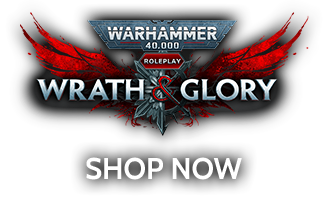































![TerrainFest 2024 Begins! Build Terrain With OnTableTop & Win A £300 Prize! [Extended!]](https://images.beastsofwar.com/2024/10/TerrainFEST-2024-Social-Media-Post-Square-225-127.jpg)





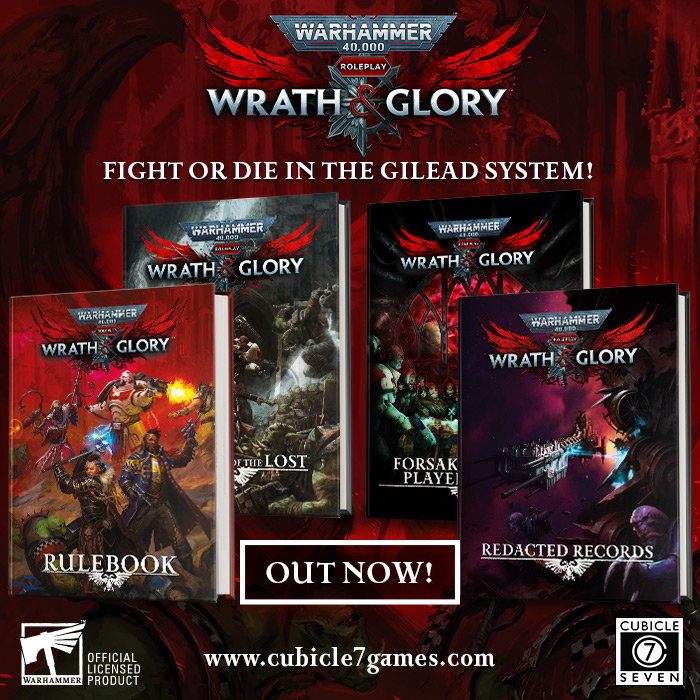

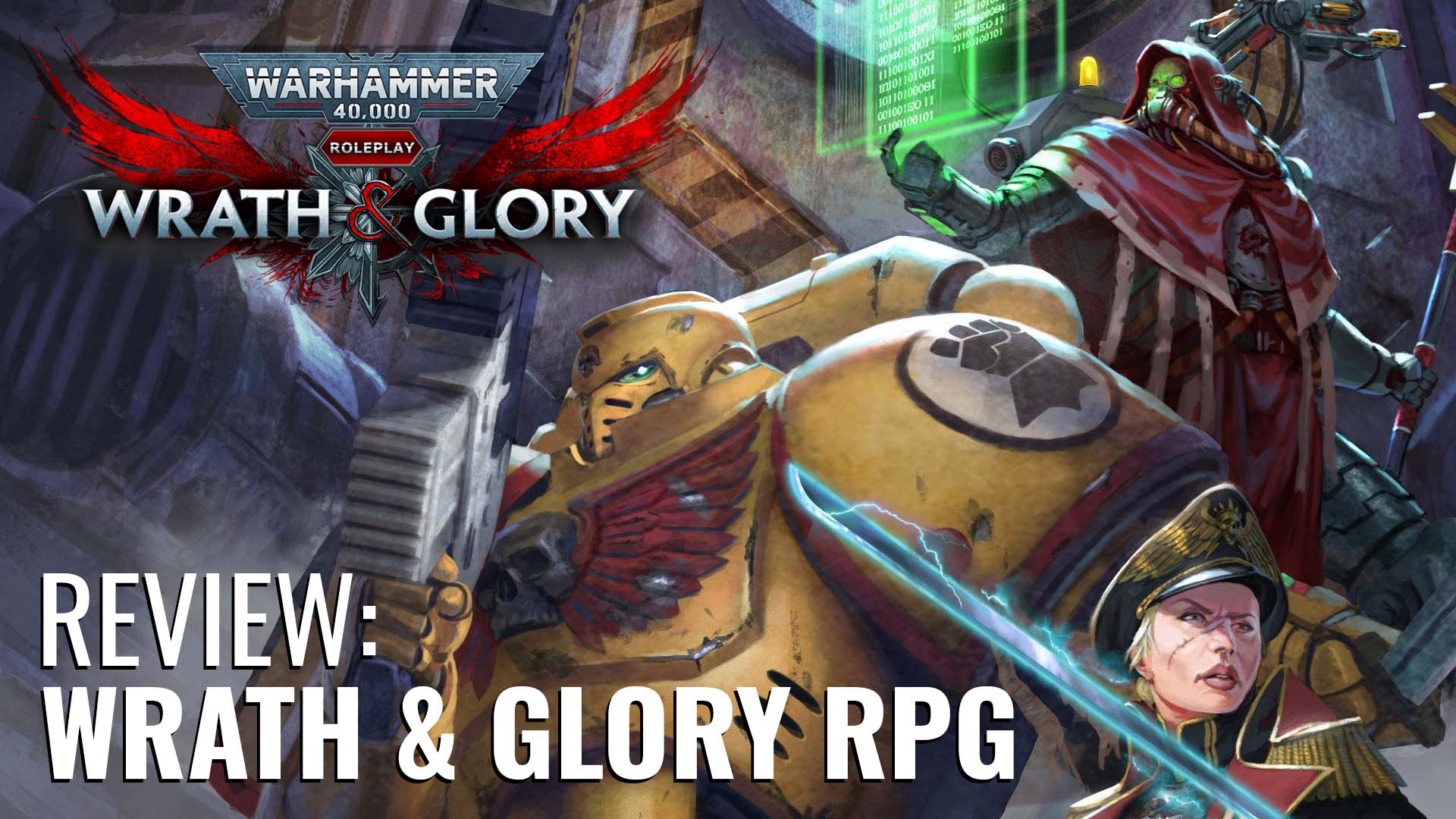
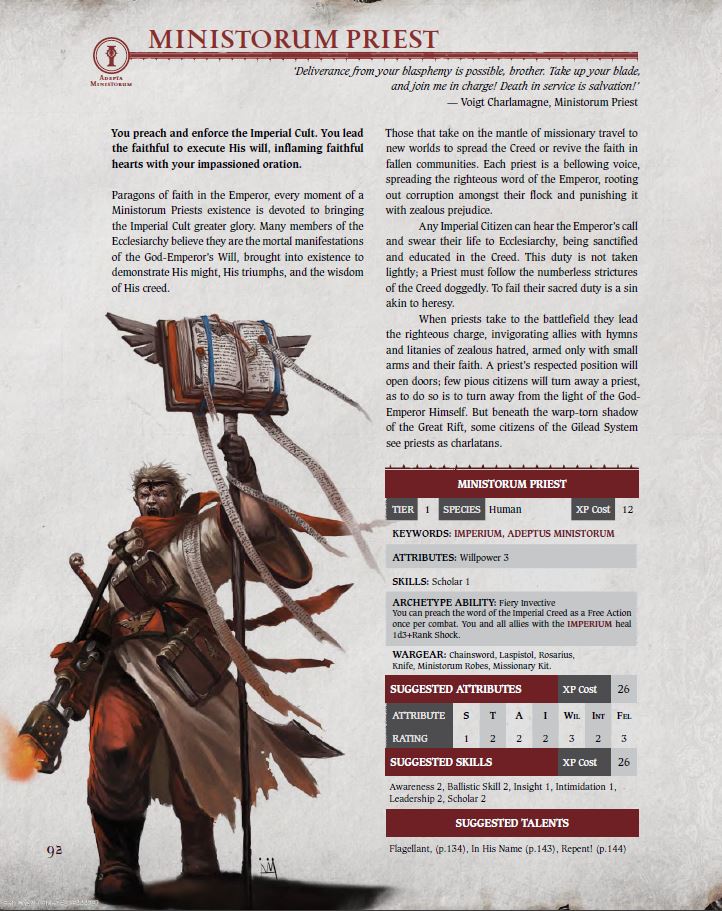


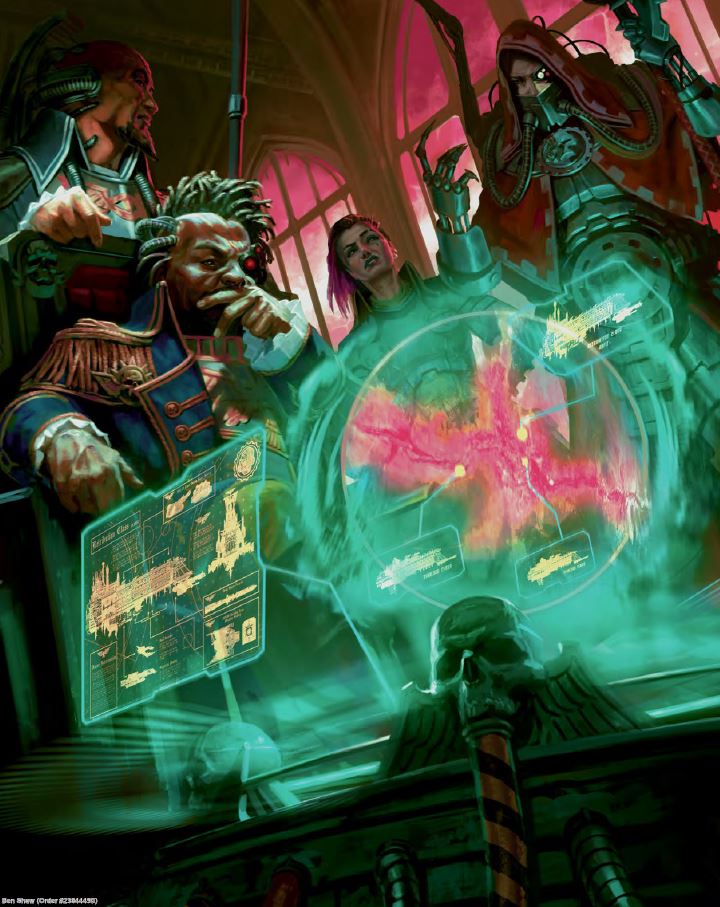
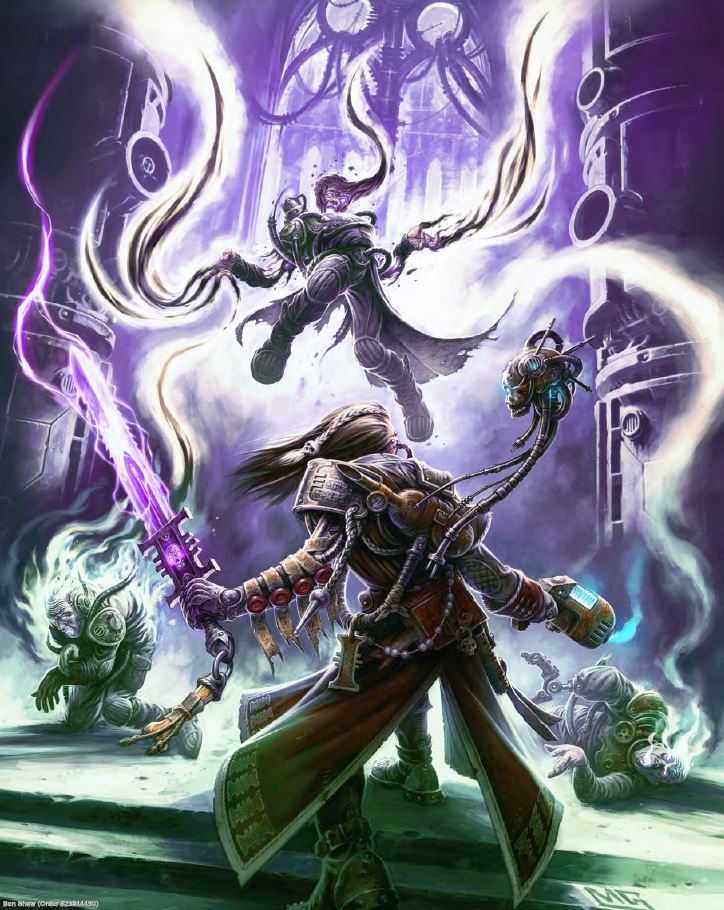
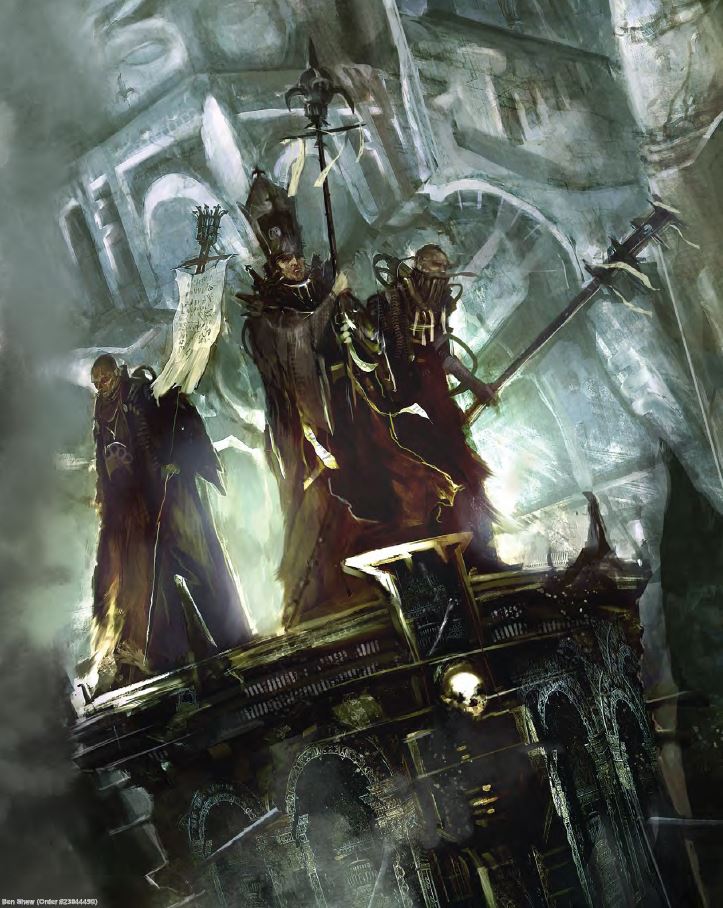
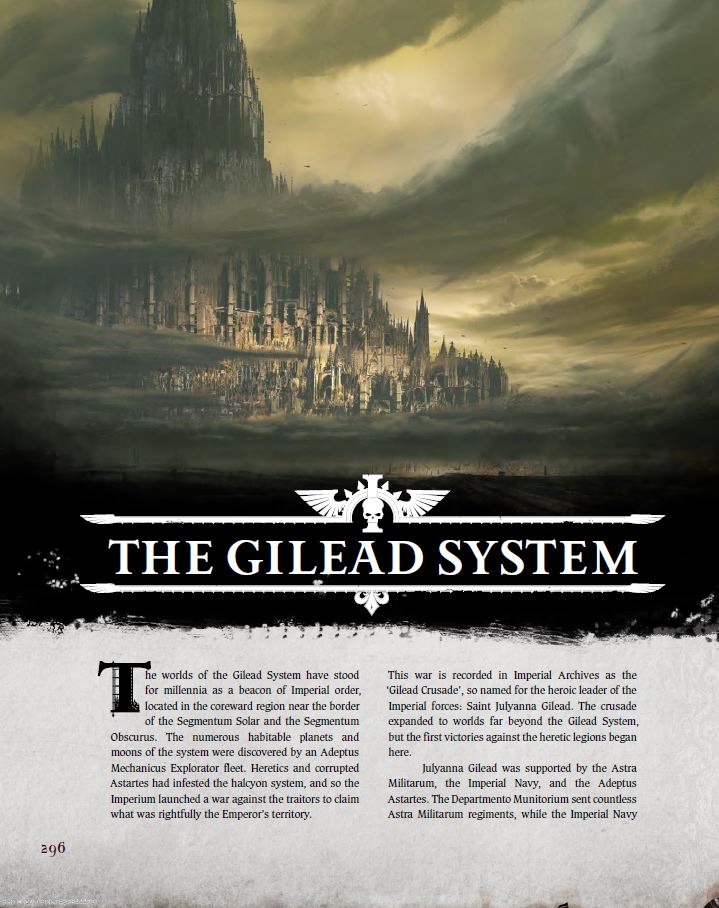
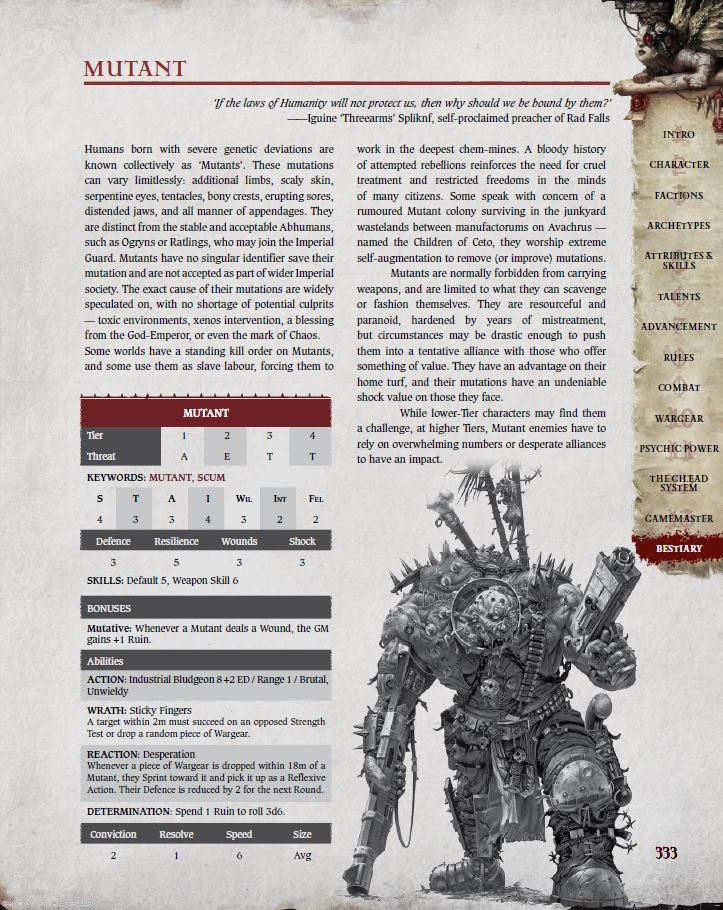
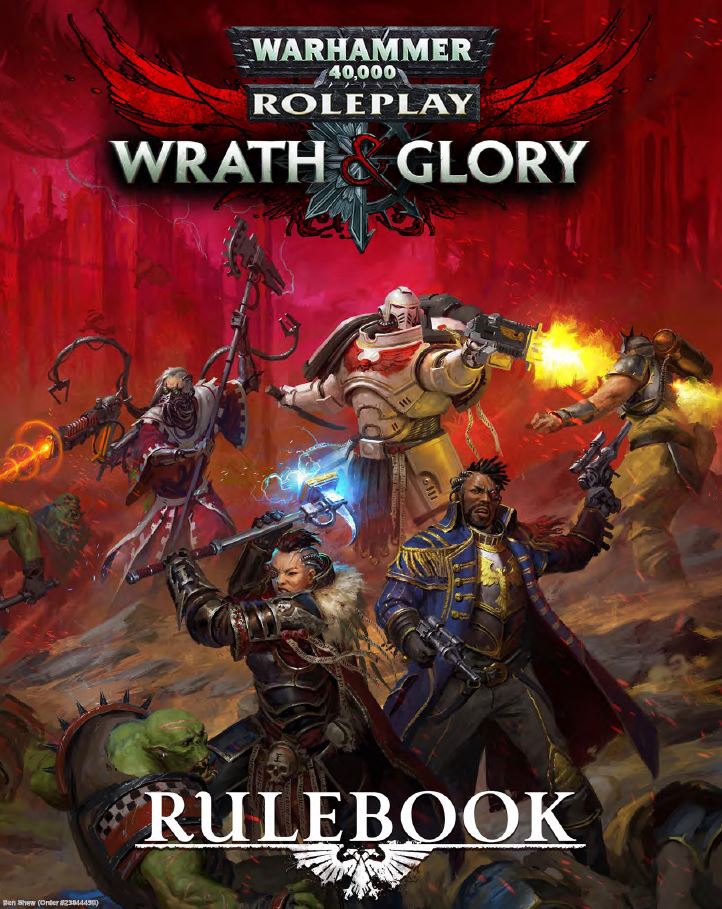






























Nice write-up and thanks for the overview. Looks like a good non-dnd option to try out, especially with friends who know a bit of the 4oK lore.
Certainly works well for 40K fans – it matches the OTT nature of the world nicely.
I’ve been watching the Unsung Fury campaign on YT, and I really enjoy the cool moments that result from shifting and criticals.
They are fun! I like that they can go both ways too!
Great overview/review. The rulebook is not the easiest to follow so you will probably need to read it through twice to really get a handle on the game system (it throws concepts at you in an odd order). It is flexible enough that you can up-tier archetypes so that your tier 1 guardsman can play in a tier 2 or 3 game. I do hope to see a bestiary in the near future. It has not been mentioned by C7 but they have said there are announcements to come soon. I would much prefer to set my games in the… Read more »
Aye, Bestiary sections are always worth bulking out. It would be good to get some kind of massive Bestiary book akin to a “Monster Manual”, especially considering the weird alien creatures out there in 40K.
I’m hoping to run a small Tier 1/2 campaign focused around investigations and sleuthing (and of course a bit of combat) in the near future.
…and yes, keep an eye out. Should be a good year for Wrath & Glory.
Stats for the Cthellean Cudbear and Catachan Brainleaf would be great 🙂
great stuff will give this a read
Thanks for the review. I am very proud of the work I did with the team on this book. I would suggest people check out the streams I have run over at Darker Days Radio and Gehenna Gaming, to show how the game works. Heck I even ran the game with Ross Watson as a player (Ross designed the system when it was held by USNA).
Been watching one of them recently, The Bloody Gates. Really good fun.
This will be great for playing some of the battles from the book’s like when Russ has to fight his way back to the surface when he crashed on earth. Or Vulcan/Coraz escaping from Curze’s command ship to escape his tortures.